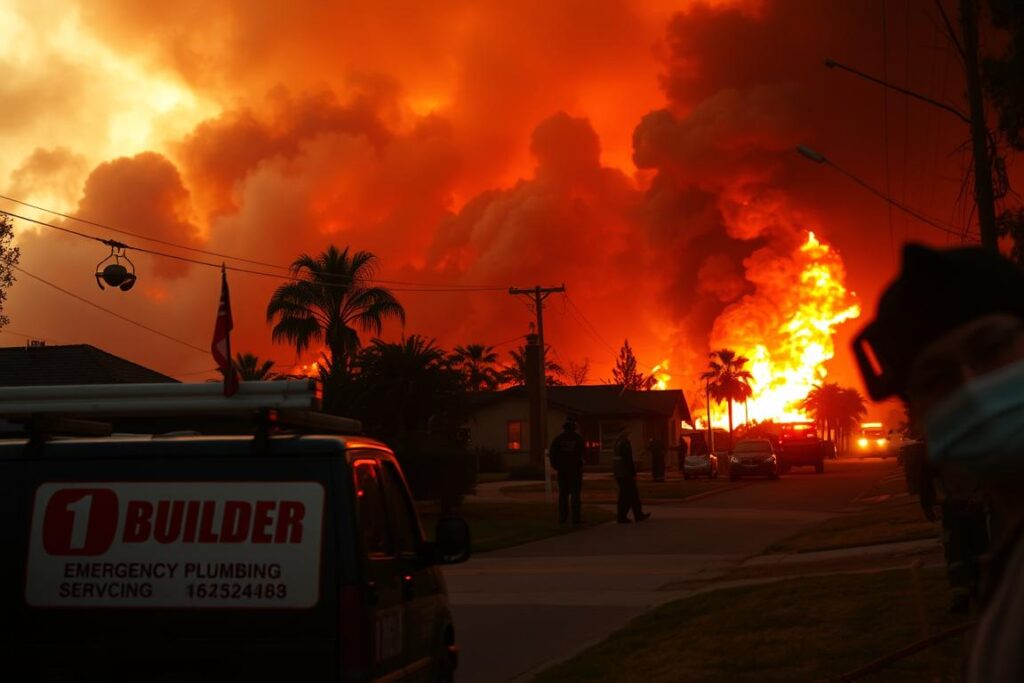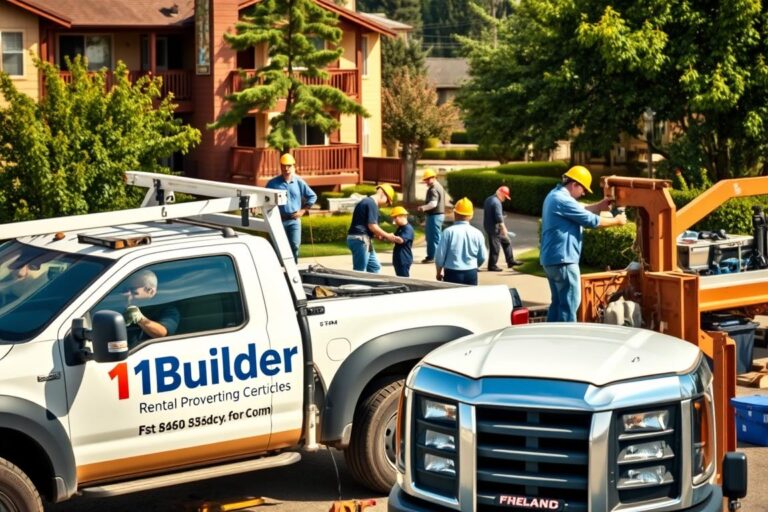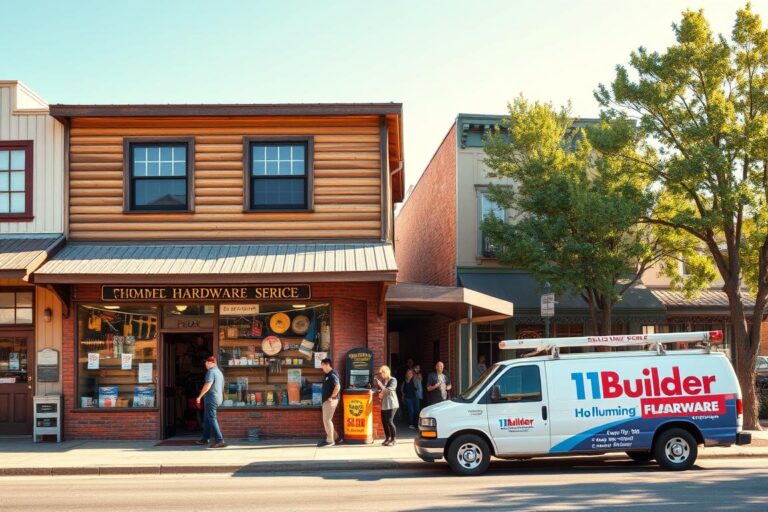As a resident of El Dorado County, you play a crucial role in shaping the region’s wildfire preparedness strategy. The Draft 2025 Western El Dorado County Community Wildfire Protection Plan (CWPP) is now available for public comment, offering a vital opportunity for you to contribute to the development of a comprehensive roadmap to reduce wildfire risks.
The CWPP identifies 22 Communities at Risk and outlines actionable strategies to enhance community resilience against the increasing threat of wildfires. By participating in the public comment period, which runs through June 9, 2025, you can help ensure the plan reflects the specific concerns and priorities of local residents.
Key Takeaways
- The 2025 Western El Dorado County CWPP is available for public review and comment until June 9, 2025.
- The plan identifies 22 Communities at Risk and outlines strategies to enhance public safety.
- Residents can participate in virtual workshops on May 20 and May 29 to provide feedback.
- Public input is crucial to shaping the region’s wildfire preparedness strategy.
- The CWPP aims to foster fire-adapted communities and reduce wildfire risks.
El Dorado County Releases Draft Wildfire Protection Plan for Public Review
El Dorado County’s Office of Wildfire Preparedness and Resilience has released a draft of the 2025 Western El Dorado County Community Wildfire Protection Plan for public review and feedback. This plan is a crucial step in enhancing the county’s wildfire preparedness resilience and mitigating the risks associated with wildfires. The draft CWPP is now available for public comment until June 9, 2025.
Overview of the 2025 Western El Dorado County Community Wildfire Protection Plan
The 2025 CWPP is designed to address the growing concerns of wildfires in El Dorado County. It outlines strategies for risk reduction, mitigation measures, and community engagement. The plan emphasizes the importance of community involvement in wildfire prevention and resilience efforts. Residents can review the draft plan on the El Dorado County CWPP page.
Timeline for Public Comment Period
The public comment period runs from May 14 through June 9, 2025, providing residents with nearly a month to review the plan and submit their feedback. To facilitate this process, two virtual workshops are scheduled: on Tuesday, May 20, and Thursday, May 29, both from 6:00-7:00 PM. Community members can submit their comments via email to [email protected]. The Office of Wildfire Preparedness and Resilience encourages all residents to participate and provide their input on the draft CWPP.
By engaging with the community through public comments and virtual workshops, El Dorado County aims to create a comprehensive and effective wildfire protection plan that reflects the needs and concerns of its residents.
Key Components of the Wildfire Prevention Plan El Dorado County CA Public Comment
El Dorado County’s approach to wildfire prevention is multifaceted, incorporating hazard assessment, mitigation strategies, and alignment with state and federal plans. This comprehensive strategy is crucial for enhancing community resilience and protection against wildfires.
Hazard Assessment and Risk Identification
The CWPP begins with a thorough hazard assessment and risk identification process. This involves analyzing the terrain, vegetation, and historical wildfire data to identify areas at highest risk. By understanding these risks, the county can prioritize its efforts and resources more effectively.
Proposed Mitigation Strategies
The plan proposes several mitigation strategies to reduce wildfire risks. These include creating defensible spaces around homes and communities, implementing prescribed burning programs, and enhancing public education on wildfire prevention. The El Dorado County Fire Safe Council plays a vital role in promoting these strategies and engaging the community in wildfire preparedness efforts.
Alignment with State and Federal Plans
The CWPP is carefully aligned with the California Fire Plan and the Healthy Forests Restoration Act of 2003. This alignment ensures that local wildfire prevention efforts are consistent with state and federal objectives, facilitating better coordination and access to resources. Key benefits of this alignment include:
- Efficient coordination between local, state, and federal agencies during prevention activities and emergency responses.
- Enhanced ability to compete for grant funding and access additional resources for wildfire preparedness and resilience projects.
- Consistent strategies across jurisdictional boundaries, thanks to the efforts of the El Dorado County Fire Safe Council.
By integrating these components, the El Dorado County CWPP demonstrates a commitment to preparedness and resilience, ultimately enhancing the county’s protection against wildfires.
How to Participate in the Public Comment Process
The draft Community Wildfire Protection Plan (CWPP) is now available for public review and comment. We encourage all residents to participate in this crucial step towards enhancing wildfire preparedness resilience in our community.
Reviewing the Draft CWPP Online
The draft CWPP is available online at El Dorado County’s official website. We invite you to review the plan and provide your feedback. The document includes detailed information on hazard assessment, mitigation strategies, and alignment with state and federal plans, ensuring a comprehensive approach to resilience.

Submitting Feedback and Comments
Your input is valuable to us. You can submit your comments and feedback through the county’s website or by attending one of the virtual workshops. We are committed to using this information to create a more effective wildfire prevention plan.
Upcoming Virtual Workshop Dates and Access Information
Two virtual workshops have been scheduled to facilitate public engagement with the draft CWPP. The first workshop will be held on Tuesday, May 20, from 6:00-7:00 PM (Meeting ID: 89983768857, Passcode: 583372). The second workshop is scheduled for Thursday, May 29, from 6:00-7:00 PM (Meeting ID: 88352589529, Passcode: 089769). These interactive sessions will include presentations from the Office of Wildfire Preparedness and Resilience staff, who will explain the plan’s development process and key components. Participants will have the opportunity to ask questions and share their perspectives on wildfire prevention priorities for their communities.
- Join the virtual workshops via Zoom using the provided Meeting IDs and Passcodes.
- Come prepared to ask questions and share your thoughts on the draft CWPP.
- Your participation is crucial in shaping the final Wildfire Protection Plan.
Understanding Wildfire Risks in El Dorado County
Understanding the wildfire risks in El Dorado County involves analyzing the historical context, current challenges, and identified communities at risk. Wildfire risk is a complex issue that affects not just the environment but also the safety and well-being of residents.
Historical Context of Wildfires in the Region
El Dorado County has experienced significant wildfires in the past, shaping its wildfire risk profile. Historical wildfires have highlighted the vulnerabilities of the region, including the impact of terrain and vegetation on fire spread. We recognize that understanding these historical incidents is crucial for developing effective prevention and mitigation strategies.
Current Challenges: Terrain, Vegetation, and Population Growth
The terrain and vegetation in El Dorado County pose significant challenges for wildfire prevention and suppression. The county’s challenging terrain, combined with dense vegetation, creates an environment where wildfires can spread rapidly. Furthermore, population growth, especially in the wildland-urban interface, increases the risk of wildfires and complicates evacuation efforts. We must address these current challenges to enhance public safety and resilience.
Identified Communities at Risk
The Community Wildfire Protection Plan (CWPP) identifies 22 Communities at Risk throughout western El Dorado County, as designated by CAL FIRE. These communities face elevated wildfire threat due to factors such as limited evacuation routes, proximity to high-risk vegetation, and challenging terrain. By focusing on these identified communities and areas, we can maximize the impact of our limited resources and provide the greatest protection to those facing the highest wildfire risk.
- The CWPP outlines strategies to enhance public safety and resilience in the face of wildfires.
- Targeted prevention efforts and customized mitigation strategies are based on each community’s unique risk profile.
- Many at-risk communities are located in the wildland-urban interface, creating challenging conditions for fire prevention and suppression.
By understanding these risks and challenges, we can work towards reducing the risk of wildfires in El Dorado County and protecting our communities and areas from the threat of fire.
Creating Defensible Space: Recommendations for Property Owners
Defensible space is a crucial element in protecting homes and communities from the ever-present threat of wildfires in El Dorado County. By understanding and implementing the Home Ignition Zone concept, property owners can significantly reduce the risk of their homes being damaged or destroyed by wildfires.
The Home Ignition Zone Concept
The Home Ignition Zone is divided into three areas: the Immediate Zone (0-5 feet around the home), the Intermediate Zone (5-30 feet), and the Extended Zone (30-100 feet or more). Each zone requires specific maintenance and landscaping strategies to reduce fuel and prevent wildfire spread.
Immediate Zone (0-5 feet) Protection Measures
In the Immediate Zone, it’s essential to keep the area around the home free from combustible materials. This includes maintaining lawns at a maximum height of four inches, removing dead vegetation, and ensuring that trees are pruned to prevent fire from climbing. By taking these measures, property owners can significantly reduce the risk of ignition.
Intermediate and Extended Zone Recommendations
In the Intermediate Zone, focus on creating landscape features that can slow and reduce fire intensity. This includes properly spacing trees and using strategic hardscaping elements. For the Extended Zone, the goal is to interrupt the path of a potential wildfire by managing vegetation and maintaining adequate spacing between trees.
- Maintain lawns and remove dead vegetation to reduce fuel continuity.
- Prune trees to prevent surface fires from climbing.
- Space trees to have at least 12 feet between canopy tops for those 30-60 feet from the home.
- Regularly inspect and maintain the property to ensure defensible space is effective.
By implementing these strategies, property owners can protect their property and contribute to the overall safety of the community against wildfire risks.
| Zone | Distance from Home | Key Actions |
|---|---|---|
| Immediate | 0-5 feet | Clear combustible materials, maintain lawns |
| Intermediate | 5-30 feet | Space trees, use hardscaping, remove ladder fuels |
| Extended | 30-100 feet or more | Manage vegetation, space trees adequately |
Conclusion: Importance of Community Involvement in Wildfire Preparedness
The success of the El Dorado County Wildfire Protection Plan hinges on the active participation of its residents. As Tanya Harlow, spokesperson for the Office of Wildfire Preparedness and Resilience, emphasized, “Community input is vital to ensure the CWPP reflects shared priorities.” We encourage residents to review the draft and provide feedback to help build a safer, more resilient El Dorado County.
Effective wildfire preparedness requires a collaborative approach between government agencies, fire safe councils, local businesses, and individual residents. Local businesses like 1Builder Handyman Services play a crucial role in enhancing wildfire safety through home improvements such as fire-resistant fencing and deck repairs.
- Community involvement strengthens both the planning process and implementation efforts.
- The finalized CWPP will guide future wildfire mitigation projects and inform policy decisions.
- Residents can contribute to community wildfire resilience by implementing defensible space practices and supporting neighborhood fuel reduction projects.
By working together, we can create a more resilient El Dorado County, better equipped to face the challenges of wildfire threats.
FAQ
What is the purpose of the Community Wildfire Protection Plan (CWPP) in El Dorado County?
The CWPP aims to identify areas at risk of wildfires and outline strategies to mitigate these risks, enhancing community resilience and protecting residents and property.
How can I review the draft CWPP?
The draft CWPP is available online on the El Dorado County website, where you can access the full document and review its key components, including hazard assessment and proposed mitigation strategies.
What is defensible space, and why is it important?
Defensible space refers to the area around a home or property that is maintained to reduce the risk of wildfire damage. It involves clearing vegetation, debris, and other combustible materials to create a safe zone.
How can property owners create an effective Home Ignition Zone?
Property owners can create an effective Home Ignition Zone by implementing protection measures in the Immediate Zone (0-5 feet), such as using fire-resistant materials, and maintaining the Intermediate and Extended Zones through vegetation management and fuel reduction.
What are the upcoming opportunities to provide feedback on the CWPP?
El Dorado County will host virtual workshops, the dates and access information for which will be announced on the county’s website and through local news outlets, providing residents with opportunities to learn more and submit their comments.
How does the CWPP align with state and federal plans?
The CWPP is designed to align with state and federal wildfire protection plans, ensuring a coordinated approach to managing wildfire risks and enhancing community resilience.
What are the main challenges facing El Dorado County in terms of wildfire risk?
The county faces challenges related to its terrain, vegetation, and population growth, which together increase the risk of wildfires and the need for effective mitigation strategies.



